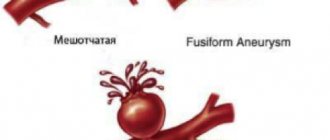Rheoencephalography is a method for studying the blood vessels of the brain using weak electrical impulses. REG is a non-traumatic, absolutely painless and quite informative method of research; it allows the doctor to assess the speed of blood flow, tone, elasticity and blood supply of blood vessels in the head.
The advantages of this research method are known to every neurologist. Rheoencephalography provides a detailed picture of intracerebral vessels, regardless of their size, can be used in any conditions and allows one to obtain differentiated information about the condition of not only the vessel, but also veins and arteries.
Blood has the highest electrical conductivity compared to other media in the body. And since blood circulation is most intense in the brain, this method allows one to evaluate not only the blood vessels, but also the state of the internal structures of the brain.
At the same time, rheoencephalography is a fairly simple and absolutely comfortable procedure for the patient.
Raeography of the head (REG)
Posted at 23:55h in Services by doctor
Rheoencephalography of cerebral vessels is a simple but effective diagnostic method. As a result of this procedure, pathological processes such as circulatory disorders, as well as other deviations from the normal functioning of this important organ, are identified.
The method is popular with patients and doctors. This is explained not so much by the affordability of the survey, but by its high information content and the ability to quickly obtain accurate results.
A big advantage over other methods of examining cerebral vessels is its minimal invasiveness, which becomes a factor favoring the use of this diagnostic even for pediatric patients.
General information about the method
Rheoencephalography (REG) allows you to identify circulatory disorders in the brain even in the early stages of pathology and thereby prevent the possibility of developing complications that pose a danger to the health and life of patients.
Its invaluable advantage over MRI and CT is the ability to be examined without waiting in line, which in other places takes about six months. Without detracting from the effectiveness of magnetic resonance and computed tomography, it should be noted that timely treatment is the key to victory over the disease, and in some cases, the ability to save the patient’s life.
What kind of procedure is this, who needs it, how to prepare for the examination - these are the questions that will be discussed in the article.
For what purpose is it carried out?
In addition to procedures related to the need to study pathological changes in the arteries and vessels of the brain, it is advisable to conduct REG for preventive purposes.
Features of REG as a study
Using rheoencephalography, doctors evaluate cerebral circulation. Vascular tone and the level of blood supply in a certain area of the brain can help determine the developing pathology and begin treatment immediately, without waiting for the development of severe stages of the disease. Among the REG parameters are the speed of propagation of the pulse wave, blood viscosity, flow time and speed of blood flow, and the severity of the vascular reaction. However, some doctors are convinced that the REG research technique is hopelessly outdated and cannot be compared in terms of accuracy and completeness of the data obtained from brain tomography. This is partly true, but it cannot be said that this study is completely useless - it significantly clarifies the clinical picture and allows the doctor to prescribe treatment as quickly as possible, and this can sometimes prevent death. Therefore, doctors still prescribe this type of study, among others, in controversial situations.
Operating principle of the device
The essence of rheoencephalography is that with the help of a special device - a rheograph - an electric current of low frequency is passed through the brain, as a result of which the resistance of brain tissue is visualized on the monitor. In this way, disorders in arteries, veins and small vessels are detected .
The presence of six channels in the device makes it possible to simultaneously examine several areas of the brain.
In the projection of the studied areas, metal electrodes are installed using an elastic rubber band, which transmit the image to the monitor.
When is an REG prescribed?
- patient complaints of dizziness;
- deterioration of condition with changes in atmospheric pressure;
- osteochondrosis;
- noise in ears;
- debilitating headaches;
- suspicion of ischemic disease;
- memory losses;
- weakened vision;
- hearing loss;
- atherosclerosis;
- hypertensive crisis;
- dystonia;
- hypertension of the cerebral arteries.
For all pathologies associated with a violation of the condition of blood vessels - their blood supply, changes in blood flow speed and viscosity, it is necessary to conduct an REG.
REG and EEG – two sides of the same coin
In some cases, EEG is preferred to identify brain pathology - for example, in epilepsy. Or they use this method of study as the main one, supplementing it with studies that make it possible to study the condition of the blood vessels. EEG can detect more pathologies than rheoencephalography. An EEG is a recording of the electrical activity of the brain. The activity of neurons is recorded using electrodes attached to the patient's head.
Reasons for conducting an EEG include spontaneous loss of consciousness, headaches that cannot be relieved with medications, sleep problems, vestibulopathy and excessive fatigue, suspected mental retardation in children and epilepsy. This study also allows you to monitor the therapy being carried out. The question of which diagnostic procedure is better is not entirely correct to ask.
What the study shows
- Based on rheoencephalography of the vessels of the head, specialists receive significant information about the condition of the object of examination. Among them is the possibility of studying vascular tone, their elasticity, blood circulation speed and blood inflow/outflow.
- The use of rheoencephalography makes it possible not only to identify abnormalities in the vessels of the brain, but also to monitor blood flow after complex operations or severe injuries.
- With the help of REG, various pathologies are detected, and the severity of the pathological process is established.
In this case, the high speed of obtaining results is of no small importance.
What problems are being identified?
- presence of traumatic brain injuries;
- localization of hematomas formed as a result of head trauma;
- pre-stroke condition;
- damage to blood vessels by atherosclerotic plaques (atherosclerosis);
- thrombus formation in the vessels of the brain;
- predisposition to increased blood pressure;
- diseases associated with circulatory disorders.
The procedure facilitates the task of making an accurate diagnosis, on the basis of which the doctor prescribes an adequate course of treatment. With the help of it, he subsequently monitors the effectiveness of therapy.
Due to the complete safety of such an examination for the patient’s health, it can be performed repeatedly.
One of the most significant advantages of encephalography is the ability to distinguish between pre-stroke indicators, which have certain differences for men and women.
Other features of the method
Specialists obtain even more information by conducting functional tests.
The simplest and most accessible of them is with nitroglycerin. This substance helps reduce vascular tone. This test is used to differentiate organic and functional disorders.
Pathologies. REG examination of cerebral vessels. Part 15. Lecture for doctors
Lecture for doctors “Pathologies. REG examination of cerebral vessels" Part 15
Content
REG examination of cerebral vessels. Part 1
Ultrasound or REG. Aspects of the use of rheoencephalography to assess cerebral circulation. Part 2
Analysis of rheographic (REG) curve. Part 3
Methodology for rheoencephalography (REG). Study of cerebral blood flow. Part 4
Changes in REG in arterial hypertension. Part 5
Vascular dystonia. REG examination of cerebral vessels. Part 6
Changes in REG in atherosclerosis. REG examination of cerebral vessels. Part 7
Changes in the venous blood supply to the brain and intracranial hypertension. REG examination of cerebral vessels. Part 8
Intracranial hypertension. REG examination of cerebral vessels. Part 9
Cerebral circulation disorders. REG examination of cerebral vessels. Part 10
Changes in REG in case of impaired patency of the cerebral arteries. REG examination of cerebral vessels. Part 11
Closed craniocerebral injury. REG examination of cerebral vessels. Part 12
Functional tests in REG. REG examination of cerebral vessels. Part 13
Artifacts during registration of rheograms. REG examination of cerebral vessels. Part 14
Hemispheric (F - M) and occipital (O - M) REGs of patient O., with pronounced atherosclerosis of the cerebral vessels and great vessels of the head, verified in sections
Rheograms of the cerebral hemispheres (FM), the skin and muscle of the temple (TT1 on the right) and the forearm (on the right) of patient B. with severe cerebral atherosclerosis
1 - initial data: a sharp decrease and flattening of rheographic waves in the frontomastoid lead, especially on the right, as well as in the temporal lead. Almost complete disappearance of the dicrotic wave on hemispheric REGs
2 — REG after 6 minutes
3 - 14 minutes after intravenous administration of papaverine.
B studies show that the decrease and loss of elasticity of the vascular wall in cerebral atherosclerosis is manifested on REG by the following indicators: 1) an increase in the duration of the anacrotic phase of the curve and a decrease in the steepness of its slope 2) varying degrees of flattening of the apex of the curve 3) smoothing of the dicrotic tooth until its disappearance 4) decrease the magnitude of the amplitude of the curve. All this leads to a significant change in the shape of the rheographic wave
Rheoencephalograms of patient K (hypertension in the transient stage)
The group studied (38 people) was the initial or transient stage of hypertension. Patients in this group (the majority are under the age of 40) are characterized by more or less long (weeks, months) periods of unstable increases in blood pressure, which can range from very high numbers to normal.
Rheoencephalographic studies revealed that the patient had; This group has a mild and unstable change in the top of the rheographic wave. The upward displacement of the dicrotic tooth led to a slight flattening of the apex, often to its bifurcation with the formation of a weakly defined plateau (Fig. 40). The angle of inclination and duration of the anacrotic phase of the REG did not change. The amplitude of the curve remained within normal limits and averaged 0.13 ± 0.04 ohms for hemispheric and 0.095 ± 0.031 ohms for occipital REGs. Under the influence of small doses of vasodilating drugs, the rheographic wave quickly returned to normal.
Rheograms (hemispheric and temporal) of patient B. (hypertension in the transitional stage).
1 — initial data: significant flattening of pulse waves, a smoothed dicrotic wave is shifted to the apex, and on hemispheric REGs exceeds it; 2 - 2 minutes after intravenous administration of 20 mg of papaverine: the apex of the curves becomes sharp, the dicrota shifts to the middle of the catacrota; 3 - after 5 minutes, REG waves acquire a normal shape.
REG in patients in the transitional stage of hypertension revealed a significant change in the shape of the pulse wave. There was a pronounced slowdown in the rise of the ascending part of the curve to an average of 0.16 ± 0.05 sec. The ratio of this time to the duration of the entire wave increased to 21.8% ± 5.4, which indicates a significant increase in cerebral vascular tone. However, the slope of the anacrotic phase remained unchanged. The dicrotic tooth shifted toward the top of the rheographic wave; the top was significantly rounded and formed a pronounced plateau. Often the dicrotic tooth even exceeded the top of the main wave, protruding above it in the form of a scallop. The REG amplitude decreased moderately to an average of 0.09 ± 0.028 ohms for hemispheric and 0.061 ± 0.018 ohms for occipital REGs, indicating a noticeable decrease in blood supply to the cerebral hemispheres. After the use of vasodilators, the curve quickly acquired a normal shape.
Consequently, according to REG data, the transitional stage of hypertension is characterized by a noticeable decrease in cerebral venous filling against the background of a significant increase in cerebral vascular tone. It is important to note that these changes in the cerebral arteries are still reversible, since after treatment and even after a single administration of vasodilators, the rheographic wave approaches the normal curve.
Rheograms of the cerebral hemispheres (FM), the musculoskeletal layer of the temple and forearm of patient M. (hypertension in the sclerotic stage).
a — initial data: significant reduction and flattening of the rheographic waves of the hemispheres and temple, the dicrotic tooth is sharply reduced and exceeds the top of the REG; b — after intravenous administration of 30 mg of papaverine, a slight increase in the amplitude of hemispheric and temporal rheograms against the background of a noticeable decrease in pulse waves of the forearm
248 people were studied - the sclerotic stage of hypertension. Patients in this group (the majority aged from 41 to 60 years) are characterized by a constantly high level of blood pressure and a gradual increase in general cerebral symptoms and symptoms of organic brain damage. Patients in this group experience microstrokes—small spots of softening in the stern and subcortical formations.
Sclerotic changes in the vessels are revealed in the fundus; ECG data indicate a significant deterioration in the blood supply to the myocardium. On radiographs, sclerotic changes in the aorta and main arteries of the head can often be noted.
Rheoencephalographic studies often reveal a sharp change in the shape of the pulse wave in these patients. The average duration of the anacrotic phase of the REG increased to 0.2 ± 0.05 sec, and its ratio to the duration of the entire wave increased to 27.8% ± 6.8, which indicates a sharp increase in tone and sclerotic changes in the cerebral vessels. An increase in tonic tension and loss of elasticity of the cerebral arteries is evidenced by a significant decrease in the angle of inclination of the anacrotic phase of the rheographic wave to an average of 72° ± 22.5° instead of 81° normally. The dicrotic tooth decreases significantly and moves towards the apex, usually exceeding it. The amplitude of the rheographic wave decreases significantly - to 0.068 ± 0.021 for hemispheric REGs and to 0.51 ± 0.009 ohms for occipital REGs. As a result of such pronounced changes in the main rheographic parameters, the shape of the pulse wave changes significantly, often acquiring an arched shape. Under the influence of vasodilators, the REG amplitude only slightly increases, and often it even decreases without changing its shape and individual details.
The most characteristic and variable REG indicators in connection with the severity of the clinical manifestations of hypertension, as follows from the above, are the dicrotic wave and the duration of the anacrotic phase of the curve. The transient phase is characterized by a noticeable, albeit unstable, displacement of the dicrotic tooth towards the apex of the REG with its slight flattening and the formation of sometimes a weakly expressed plateau. Subsequently, as the disease deepens, i.e., as the tone increases and the elasticity of the arteries changes, a more significant flattening of the apex of the REG occurs with the formation of a pronounced plateau as a result of the displacement of the dicrotic tooth to the very apex against the background of a noticeable decrease in the amplitude of the curve. Finally, in the sclerotic phase of the disease, a sharp flattening and rounding of the apex of the REG occurs with a significant decrease in its amplitude; the curve takes on an arched shape.
However, REG changes in the sclerotic phase of hypertension differ from those in general and cerebral atherosclerosis in that in hypertension the highest point of the REG wave is formed by a dicrotic wave, surpassing the top of the systolic wave, whereas in atherosclerosis additional waves are often absent, and if they are pronounced, then never exceed the top of the REG. Although the dicrotic wave is often weakly expressed, its high location above the very top of the REG in the later stages, as well as its good expression and shift to the top of the curve in the earlier phases of hypertension, is a very characteristic, distinctive sign of a change in the rheographic wave of the hypertensive type.
Hemispheric REG (FM) and rheograms of the musculocutaneous integument of the temple (TT) of patient B.
1 - during a hypertensive crisis; 2 — hemispheric and occipital REG after 10 minutes. after intramuscular injection of magnesium sulfate
Rheograms of patient L. (hypertension with a tendency to local cerebral vascular crises).
1 - hemispheric REG (d - right, s - left); 2 — rheograms of the musculocutaneous layer of the temple and 3 — forearm
Hemispheric (F—M), occipital (O—M) REG and reegrams of the musculocutaneous REG of patient S. with bilateral blockage of the internal carotid artery. A sharp decrease and flattening of the rheographic waves of the hemispheres (a). b — orbital, c — temporal plethysmograms of the same patient.
Diagram reflecting the dynamics of hemispheric and regional REG in different groups of patients during compression of the common carotid arteries. In the “Background REG” column, the first row indicates the frequency of absence of asymmetry in the initial curves, the second - the frequency of interhemispheric asymmetry due to a decrease in rheotraphic waves on the side of the affected vessel, and the third - the frequency of interhemispheric asymmetry due to the greater amplitude of the REG on the side of the affected vessel.
1 — no changes in REG during compression of the carotid; 2 - unilateral decrease in REG amplitude with compression of the affected vessel and 3 - uninjured vessel; 4 - bilateral decrease and 5 - bilateral increase in rheographic volition during compression of the carotid
Hemispheric (FM) and temporal (TT1) rheograms of patient T. with bilateral blockage of the internal carotid artery and stenosis of the left vertebral artery
Interhemispheric asymmetry of the REG in patient X., 50 years old, with stenosis of the left internal carotid artery and symptoms of arteritis due to a decrease in the curves on the left. 1 — compression of the left common carotid artery causes a significant decrease in the amplitude of hemispheric REG only on the left; 2—right: sharp bilateral decrease in hemispheric rheograms and unilateral decrease in temporal ones
Compression of the stenotic carotid artery in 43 of 56 patients (76.8%) caused a significant decrease in the REG amplitude, on average by 61.3 ± 10.8%, only on the same artery; in 7 patients (12.5%) there was a bilateral increase in rheographic waves, and in 6 people (10.7%) there were no changes in the curves. When the opposite (intact) carotid artery was compressed, 30 patients (53.6%) had a bilateral decrease in the REG amplitude by an average of 54.3 ± 12.7%; in 18 (37.4%) there was only a unilateral decrease in the magnitude of rheographic waves by side of compression and in 5 patients (9%) - their bilateral increase. A particularly pronounced decrease in blood flow in the affected hemisphere with compression of the “healthy” carotid artery was observed in 13 patients with a pronounced narrowing of the main vessel. Such a sharply positive test indicates a significant compensating role of the pressed carotid artery and insufficient compensation through the vertebrobasilar system. In 18 patients in whom the “healthy carotid test” turned out to be negative (did not cause a deterioration in the blood supply to the affected hemisphere), the narrowing of the internal carotid artery was small (segmental) or the collateral circulation was sufficiently developed not only through the anterior connecting artery, but through the posterior connecting arteries.
Thus, in cases of complete blockage of the carotid artery, a sharp decrease in the REG amplitude of the hemisphere of the same name occurs when blood flow in the main compensatory system is obstructed; with stenosis, depending on its severity and the degree of reduction in blood flow, a decrease in the REG amplitude in the hemisphere of the same name occurred in some cases with compression of the stenotic artery itself, and in others with compression of the intact carotid artery, which provides compensatory collateral circulation. The main difference in the dynamics of REG during compression of the carotid arteries during stenosis was that in the majority of patients (30 people), a significant decrease in blood supply to the hemisphere of the same name occurred with compression of both the stenotic and “healthy” arteries. An interesting fact is that when a stenotic artery is compressed, REG changes often do not occur immediately, as when a “healthy” carotid is pressed (after 1.5-3 seconds), but much more slowly (after 15-26 seconds).
An equally valuable distinguishing feature of incomplete occlusion of the internal carotid artery from its complete occlusion is the dynamics of the REG when turning the head to the sides. In patients with complete blockage, turning the head to both sides does not cause any changes in cerebral hemodynamics. With stenosis, turning the head in the opposite direction also did not cause changes in the REG, while turning the head towards the stenotic artery was accompanied in 37 of 56 patients (66%) by a significant decrease in the REG amplitude of the same hemisphere - by 52.8 ± 7.6% ( fluctuations 34.8-68.3%). Let us note once again that before and after functional tests it is necessary to strictly monitor the balancing of the rheographic channels.
Dynamics of REG in patient K., with hypoplasia of the right vertebral artery
1 — initial hemispheric (FM) and occipital (OM) REGs; 2 — a sharp decrease in the amplitude of the occipital REG on the right when the right vertebral artery is clamped during surgery at its mouth; 3 - gradual increase in rheographic waves to the initial curve at the 4th minute after clamping of the right vertebral artery, d - right, s - left. The arrow indicates the compression of the artery.
Dynamics of occipital REG in patient D. with a transient circulatory disorder in the left middle cerebral artery system during compression of the occipital arteries.
A slight decrease in REG waves during compression of the occipital arteries (by 10%).
Leads: occipito-parenteral (OP) and occipito-mastoid (OM); d1 and s1 are the first derivatives of REG. Arrows mark the beginning and end of arterial compression
Dynamics of REG in patient A. with stenosis of the right vertebral artery at the level of the osteophyte during compression of the occipital arteries. Decrease in the amplitude of the occipital REG: on the right - sharp in the occipitomastoid (OM) lead, significant - in the occipitomastoid (OM) lead
Occipital REG of patient S. with occlusion of the left vertebral artery. Leads: occipto-mastoid (OM) and occipto-pariental (OP)
A sharp bilateral decrease in the amplitude of the occipital REG (0.02 ohm) with a fairly high amplitude of the hemispheric REG (0.13 ohm) in patient Sh., 68 years old, with complete blockage of the basilar artery.
Leads: octinal-masgoidal (OM) and frontomastoidal (FM), d1 and s2 - the first derivatives of the REG
Dynamics of occipital (OM) and hemispheric (FM) REGs of patient A. with complete blockage of the right vertebral artery under the influence of functional loads.
1- pronounced interhemispheric asymmetry of the initial occipital REG due to a decrease in pulse volition on the right; 2 - disappearance of this asymmetry after sublingual application of nitroglycerin (0.00013). The arrow marks the beginning of functional tests, and - a decrease in the amplitude of the occipital REG; sharp on the right and significant on the left when turning the head to the right; b — no changes in REG when turning the head to the left; c - when extending the neck
Occipital REG of patient Sh. with vertebrobasilar insufficiency caused by displacement of the right vertebral artery by an osteophyte. 1 - sharp decrease in REG amplitude in the occipitomastoid lead on the right when turning the head to the right; 2 - significant decrease in rheographic waves in the same lead on the left when turning the head to the left; 3 - the same on the right, with neck extension; d1 and s1 are the first derivatives of REG
Decrease in occipital (OM) REG in patient L. with subluxation of the articular processes of the cervical vertebrae.
I - decrease is sharp on the right and significant on the left when turning the head to the right; 2— when extending the neck
Decrease in the amplitude of the occipital REG in patient B. with hypertension and osteophytes in the area of the uncovertebral joints of the IV-VI cervical vertebrae (more on the left).
I - on the left, a sharp decrease in the amplitude of the REG when turning the head to the right; 2 - significant decrease in REG amplitude when turning to the left.
Pronounced interhemispheric asymmetry of the hemispheric (FM), frontotemporal (FT) and occipital (OM, OR) REG due to the reduction and flattening of rheographic waves on the left in patient A. with complete blockage of the left internal carotid and vertebral arteries
Dynamics of REG of patient 3. with hypoplasia and anomalous origin of the left vertebral artery
Regional REG of a healthy study subject K., 22 years old. Leads: parieto-occipital (PC), fronto-central (FC), occipito-parietal (OP) and fronto-frontal (FF1); d1 and S1 are the first derivatives of REG
Regional and hemispheric REG of patient K. with complete blockage of the trunk of the left middle cerebral artery.
Pronounced interhemispheric asymmetry of hemispheric (FM) and, especially, regional REG to the rolandotemporal lead due to a significant decrease in the amplitude of the curves on the left. Frontal REGs (FF1 are symmetrical both in size and shape
Regional and hemispheric REG of patient K. with complete blockage of the trunk of the left middle cerebral artery.
Pronounced interhemispheric asymmetry of hemispheric (FM) and, especially, regional REG to the rolandotemporal lead due to a significant decrease in the amplitude of the curves on the left. Frontal REG (FF1) are symmetrical both in size and shape
Interhemispheric asymmetry in only regional REGs of patient C, with blockage of the trunk of the left middle cerebral artery.
Sharp asymmetry in the rolandotemporal lead (RT) and slight asymmetry in the parieto-neutral lead (PC). The amplitude of the hemispheric (FM) and frontal (FF1) leads is quite high and symmetrical
Hemispheric and regional REG of patient K. with damage to the left anterior cerebral artery, interhemispheric asymmetry of regional REG in the fronto-central lead (FC) due to a decrease in pulse waves on the left and in the occipital-mastoid lead (OM) due to an increase in pulse waves on the left. Hemispheric (FM) and regional REGs in the narieto-central lead (PC) are symmetrical
Hemispheric and regional REG of patient K. with subarachnoid hemorrhage in the anterior parts of the brain on the left. Noticeable asymmetry of hemispheric (FM) and sharp asymmetry of regional frontal (FT) REG. Occipital REGs are symmetrical, d - on the right; s - left
Synchronously recorded EEG and REG of patient L. with extensive subarachnoid hemorrhage in the base of the brain and blood spreading along the left Sylvian fissure to the convexital surface of the brain.
Leads: EEG - occipito-parietal (OP), fronto-temporal (FT); REG - frontomastoidal (FM) and occipitomastoidal (OM), d - left; s - on the right. The arrow marks the venous wave.
Against the background of dysrhythmia, there is greater suppression of the alpha rhythm in the occipital region on the right. A sharp decrease in rheographic waves of the occipital region on the left; their increase and the appearance of a venous wave on the right.
Hemispheric and regional REGs of patient Ch. with a hematoma located lateral to the internal capsule of the left hemisphere.
Pronounced asymmetry of hemispheric (FM) REG due to reduction and flattening of pulse waves on the left with a sufficiently high and symmetrical amplitude of regional frontal (FF1) REG
Hemispheric and regional REGs of patient B. with hemorrhage from a ruptured aneurysm of the right anterior cerebral and anterior communicating artery
Asymmetry of hemispheric (FM) REG due to a decrease in the amplitude of the curve on the right and regional REG in the frontotemporal (FT) lead due to an increase in the amplitude of pulse waves on the right. Frontal (FF1) REGs are symmetrical.
REG of patient B. with massive hemorrhage in the deep parts of the left hemisphere.
Sharply expressed asymmetry of hemispheric (FM) and occipital (OM) REG due to a decrease in pulse waves on the left
REG of patient N. with massive hemorrhage in the deep parts of the left hemisphere, complicated by the penetration of blood into the ventricular system.
Significant increase in the amplitude of hemispheric and occipital REG
Rheoencephalograms of patient K. with diapedetic hemorrhage in the brainstem
Leads: ECG. fronto-mastoidal, bitemporal and bnmastoidal
EEG and REG of patient M. with a massive tumor in the left posterofrontal parasagittal region.
Interhemispheric REG asymmetry due to a decrease in the amplitude of the curve on the left in the frontomastoid and especially in the occipitomastoid leads. Diffuse gross EEG changes: the presence of slow waves in all areas, more pronounced in the parieto-sagittal and frontal-sagittal leads behind
EEG and REG of patient S. with arachnoidendothelioma of the right occipital-parietal region. a - a significant change in the shape of the REG in the occipitomastoid leads (more on the right), correlating with mild changes in biopotentials in the right parietotemporal region (T - P); b — continuation of REG recording at low paper speed; the manifestation of respiratory waves on the REG is noticeable, especially occipital on the right
Dynamics of REG and EEG of patient A. with a pituitary tumor
1 - pronounced asymmetry of the initial hemispheres of the REG due to a decrease in pulse waves on the right (on the side of greater vision loss); 2 - a sharp increase in the amplitude of hemispheric REG on the right and desynchronization of the cortical rhythm after a light muscle load, which led to the disappearance of REG asymmetry
Dynamics of REG and EEG of patient G. with a tumor of the left temporo-parieto-occipital region.
1 - interhemispheric asymmetry of the occipital REG due to a decrease in pulse volition on the left; 2 - the appearance of evoked potentials on the EEG is accompanied by an increase in REG waves only on the right - on the healthy side
EEG and REG of patient N. with carotid-cavernous anastomosis on the right
Interhemispheric REG asymmetry is sharp in the frontomastoid (FM) and noticeable in the occipitomastoid (OM) leads due to an increase in the amplitude and steepness of pulse waves on the right in the absence of EEG changes. Leads: EEG - occipital-sagittal, parieto-sagittal, frontal-sagittal and temporo-frontal
EEG and REG of patient E. with arteriovenous aneurysm of the right middle cerebral artery.
Interhemispheric asymmetry of global (A - M) and occipital (O - M) REG due to an increase in the amplitude and steepness of the curve on the right. Mild irritative changes in the EEG without signs of a focus
REG of patient F. with an arterial aneurysm (verified by section), recorded three weeks before death from hemorrhage from a ruptured aneurysm. Interhemispheric asymmetry of the REG due to a decrease in pulse waves on the left
Dynamics of REG in patients with closed craniocerebral injury
A - patient, 33 years old
1 - acute period; 2 - after 1 month; 3 - 4 months after injury
B patient N.
1 - acute period; 2 - 4 - long-term period of cranial injury
Dynamics of rheograms of the cerebral hemispheres and musculocutaneous tissue of patient U. with hepatocerebral dystrophy during pharmacological tests.
1 - a significant increase in rheographic waves, especially the catacrotic phase 5 minutes after intravenous administration of 50 mg of nicotinic acid (b), and the appearance of a venous wave (marked by an arrow) when lowering the head down (c); 2 - a slight increase in the amplitude of rheograms 5 minutes after intravenous administration of 40 mg of papaverine (b) and a noticeable increase after lowering the head down (c) by 20° - Trendelenburg position
Dynamics of rheograms of patient K. with hepato-cerebral dystrophy during a transient circulatory disorder in the basin of the right middle cerebral artery.
1 - pronounced interhemispheric asymmetry of the REG due to a decrease in the amplitude of the curve on the right; 2 — slight increase; 3 – noticeable decrease in amplitude hemispheric REG on the right after internal administration of 50 mg of nicotinic acid
Significant increase in the amplitude of hemispheric and regional REG of patient K. with major epileptic seizures
REG of patient P., 56 years old, with Jacksonian-type convulsions in the right arm. Noticeable asymmetry of hemispheric (FM) and occipital (OM) REG due to sharpening of the apex of pulse waves on the right. Noticeable asymmetry of hemispheric (FM) and occipital (OM) REG due to sharpening of the apex of pulse waves on the right
EEG and REG of patient M., 15 years old, with focal epilepsy due to scar changes after surgery in the right hemisphere
REG and rheograms of patient P. with migraine
a - pronounced asymmetry of hemispheric REG due to an increase and flattening of pulse waves on the right and asymmetry of rheograms of the musculocutaneous surface due to an increase in the amplitude of the curve on the left during an attack of pain in the area of the right temple;
b — REG and rheograms of the same patient outside of a headache attack; amplitude asymmetry remained, but the shape of the REG waves was somewhat normalized
REG of patient S. with migraine
a - a sharp decrease in the amplitude of the hemispheric (LI) REG on the left - on the side of migraine pain outside of an attack: b - pronounced asymmetry of the REG persists even after sublingual application of nitroglycerin (0.0002)
Dynamics of regional frontal (FF1) and parieto-central (PC) REGs of patient G. (hypertension)
1 - before, 2 - after sublingual use of nitroglycerin
Occipital REG of patient O. with complete blockage of the right vertebral artery. Pronounced interhemispheric asymmetry of the shape of REG waves and their first derivatives (d1 and s1) in the occipitomastoid lead
How to decipher the results
When assessing the examination results, the patient’s age must be taken into account. This is explained by the fact that the walls of blood vessels lose their elasticity over the years, become more fragile, and react differently to various stimuli.
An REG shows graphical wave fluctuations. The following indicators are taken into account:
The specialist reads the diagnostic results, taking into account the regularity of the waves, the appearance and rounding of the apex, as well as the location of the tooth and incisura.
The rate of oscillations of the wave depicted on the screen in adults differs from the manifestations of acceptable indicators in a child.
Rheoencephalographic study makes it possible to classify the condition of blood vessels according to three types of their behavior:
- Dystonic. Characterized by frequent manifestations of changes in vascular tone. Hypotonia with difficulty in venous outflow of blood and low pulse filling is more often observed.
- Angiodystonic. Its symptoms are similar to those of the previous type. The difference is that the cause of the tone disorder is a defect in the vessel wall.
- Hypertensive type according to REG. Significantly different from the species described above. Vascular tone is significantly increased. Venous outflow is impaired.
These types of behavior are not independent pathologies. They are only signs of other diseases and make it possible to identify them in the early stages of development.
You should not attempt to decipher the examination results yourself. It is better to leave this to qualified doctors who will do it professionally and establish an accurate diagnosis.
Technique for performing rheoencephalography
REG is carried out using a 3–6-channel device. The greater the number of channels, the larger parts of the brain can be examined. The diagnosis is performed by a nurse, and the results are analyzed by a neurologist. During the procedure, the patient sits in a chair or lies on a couch with his eyes closed. The specialist places sensors coated with a special agent on his head, which are secured with an elastic band. They send signals to the brain, and the screen displays indicators of the state of the arteries of their blood supply. In certain cases, data is displayed on paper.
The area of sensor fixation is determined by the part of the organ being examined. When studying the external carotid artery, they are fixed in the forehead and ears. When determining the condition of the internal vessel, sensors are fixed at the level of the bridge of the nose and mastoid process. If the vertebral vessels are damaged, the REG procedure will be as follows: sensors are placed on the back of the head and mastoid process, and the readings resulting from the examination are sent to the computer. In this situation, simultaneously with rheoencephalography, a cardiogram is taken.
After the procedure is completed, your doctor may order a series of functional tests. Most often used:
- nitroglycerin tests;
- physical exercise;
- hyperventilation;
- change in body position.
After this, the REG study is repeated and its results are evaluated in comparison with the previous ones. The procedure takes 10–30 minutes. During its implementation, no unpleasant sensations appear. Headache may begin after taking nitroglycerin, which is a side effect of the drug.
Let's figure out what the rheoencephalogram shows. In order to correctly decipher the data obtained during the study, the doctor must know the age of the patient. Vascular tone and blood flow speed differ in young, mature and old people. What would be considered a pathology for a young person is normal for an elderly person. Each part of the wave has its own name. The ascending part is called anacrota, the descending part is called catacrota. The bend between it is the incisura.
Analyzing the results of REG, the doctor evaluates the following characteristics:
- wave regularity;
- appearance of anacrota and catacrota;
- depth of dicrotic tooth;
- localization of incisura;
- presence and nature of additional curves.
Rheoencephalography is not an independent diagnostic procedure that makes it possible to establish an accurate diagnosis for cardiac and neurological problems. However, its timely implementation helps to identify the fact of deterioration in the condition of blood vessels at the initial stage of the disease.
Deciphering the results and prescribing an effective therapeutic regimen promotes rapid recovery. Despite the skepticism of some specialists about REG, this technique is used in most medical institutions.
How is the procedure performed?
The described diagnostic method is completely painless and safe. During the procedure, there is no impact on the patient’s skin, and no various instruments are used.
During the procedure, the patient is placed on a couch or offered to sit on a chair. To obtain more accurate information, the patient is asked to tilt his head forward, turn it to the right or to the left.
The procedure lasts 10-15 minutes. The results of the study are displayed immediately on the monitor screen and are assessed by a neurologist.
Recommendations
To avoid distorting the results, you should consider some simple tips:
- Before installing the electrodes, some areas of the head are treated with alcohol. It is advisable not to stress and take it calmly.
- Eyes should be kept closed during the procedure.
- You need to completely relax. Anxiety can cause a sharp constriction of blood vessels. This will affect the wave oscillation performance.
- It is advisable to rest for 15-20 minutes before the procedure.
- The day before the scheduled examination, you should not take medications that can affect the speed of blood flow.
- The session should not be interfered with by any objects, so you need to remove chains, earrings, hairpins and let your hair down.
If you are examining a small child, you should tell him in advance everything about the upcoming procedure. You can pick him up and sit on a chair with him. Then he will not be afraid and nervous.
Preparatory stage
No special preparation for the study is prescribed. A few days before the examination, it is necessary to avoid stress; the night before the procedure, you need to get a good night's sleep. You cannot smoke, drink alcohol, black tea or strong coffee. These factors negatively affect the quality of blood vessels and the state of the nervous system, which can distort the results of the study. In some cases, your doctor may advise you to temporarily stop taking medications that affect your arteries. However, this applies only to course admission tools. If continuous therapy is necessary, diagnostics are performed against its background.
When you arrive at the clinic, you should not immediately go for an examination. You need to prepare by resting in a well-ventilated room. Long hair should be pulled back into a ponytail so that it does not interfere with the installation of the electrodes.
About contraindications
Due to the absolute absence of harm to the body, rheoencephalography has virtually no contraindications or side effects.
Such examination is contraindicated for newborn children . This is explained by the small amplitude of the reflected waves, the large size of the anacrote and the complete absence of incisura. Such readings do not provide an accurate picture of the condition of the vessels of the head.
Rheoencephalography is an effective and affordable method for examining cerebral vessels. Its widespread use is due to the presence of the device in every hospital and, of course, the absence of side effects and contraindications for use.
Deciphering the rheoencephalogram
To correctly interpret the data obtained from taking REG of the vessels of the head, the diagnostician must know information about the exact age of the person who underwent the procedure. This is due to the difference in the nature of blood circulation and vascular tone in subjects of different age categories. That is, what is considered the norm for the elderly and senile will be a clear deviation from the norm for young people or children.
The rheoencephalogram looks like a wave-like curve, and each of its fragments has a corresponding name. The ascending part is called anacrota, the descending part is called catacrota, the bend between them is called incisura and the small tooth after it is called dicrota. When decoding, the specialist evaluates the following characteristics:
- regularity of wave oscillations;
- appearance of anacrota and catacrota;
- wave peak features;
- the location of the initizura and dikrota, the depth of the latter;
- the presence and nature of additional bends.
SOURCES: https://diametod.ru/prochee/chto-takoe-reg-golovnogo-mozga https://stopholesterin.ru/analizy/reoentsefalografiya-sosudov.html https://yandex.ru/turbo?text=https% 3A%2F%2Fgolovy.net%2Fdiagnostika%2Freg-sosudov-golovnogo-mozga-chto-pokazyvaet-rasshifrovka-issledovaniya.html&d=1









